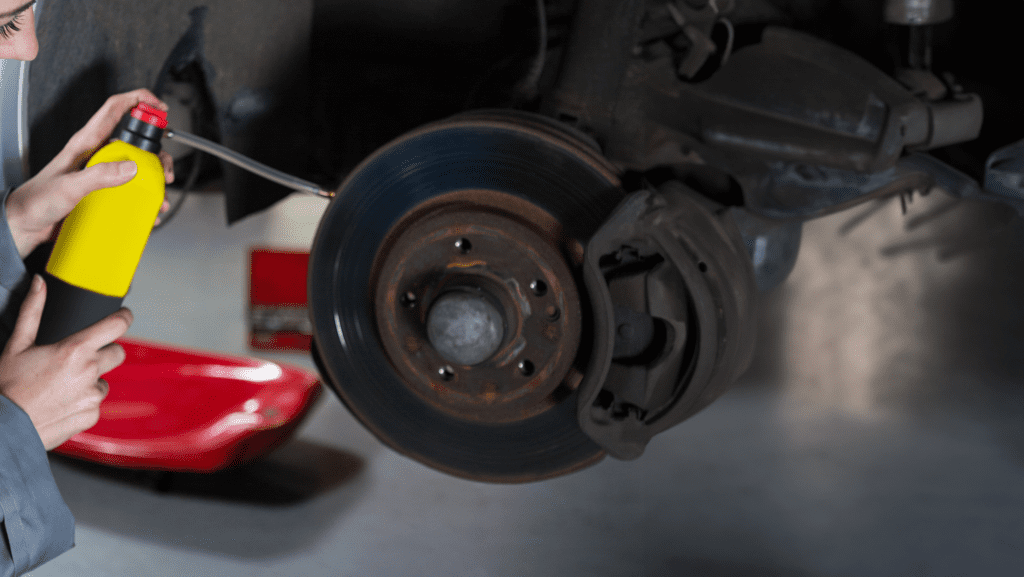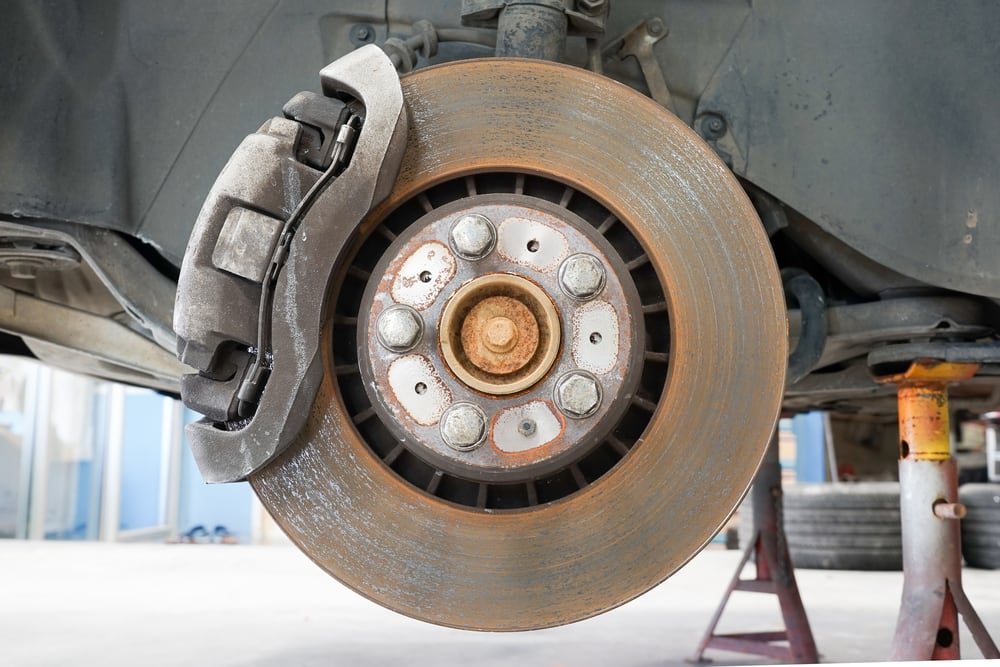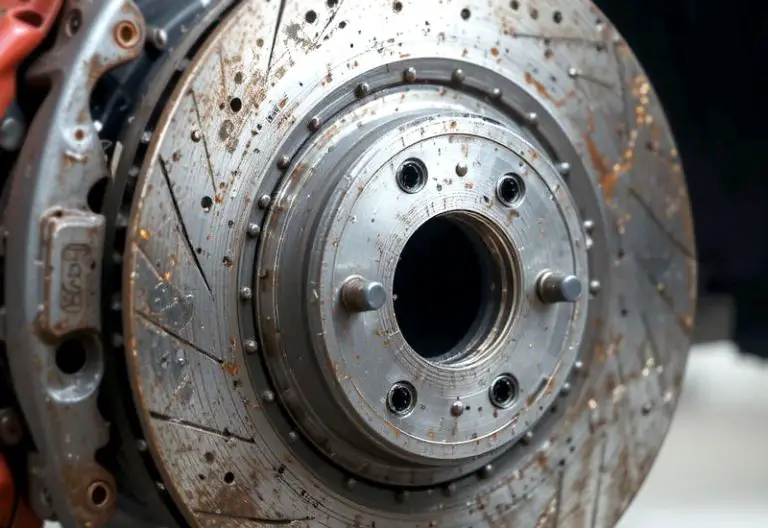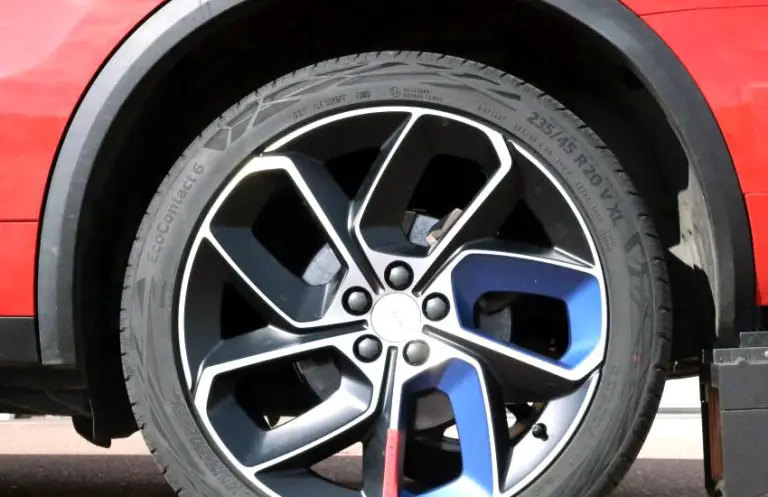It is not safe to drive with a stuck caliper, as it can lead to brake overheating and a potential loss of control. It’s imperative to address the issue immediately to prevent further damage and ensure road safety.
A stuck caliper can significantly impact your vehicle’s brake system and compromise its ability to stop effectively. In such a situation, it’s crucial to promptly address the problem to prevent potential accidents or damage to other components. Failing to do so may result in increased wear on the affected brake pads and rotors, as well as reduced braking effectiveness.
Addressing a stuck caliper promptly not only ensures your safety on the road but also prevents costly repairs in the long run. Therefore, it’s essential to have your vehicle inspected by a professional mechanic as soon as possible to address any issues with the caliper.
Signs Of A Stuck Caliper
Burning Smell
If you notice a burning smell emanating from your wheels, it could indicate a stuck caliper.
Heat generated by the brakes can cause unusual odors, so be vigilant if you detect this scent.
Uneven Brake Wear
Uneven brake wear is a common indicator of a stuck caliper. Monitor your brake pads for uneven degradation.
Calipers that are stuck can lead to uneven pressure on the brakes, resulting in this issue.
Effects Of A Stuck Caliper
Uneven Braking
Braking feels unstable, car pulls to one side, pads may wear unevenly.
Overheating Brake System
Increased brake fade, reduced braking efficiency, potential rotor warping.
Assessing The Severity
Assessing the severity of a stuck caliper is crucial to road safety. Driving with a stuck caliper poses serious risks, including brake failure and potential accidents. It is recommended to have the issue addressed promptly by a professional mechanic to avoid further damage and ensure safe driving.
Assessing the SeverityChecking Brake FluidOne of the first steps in assessing the severity of a stuck caliper is to check the brake fluid. Low levels of brake fluid could indicate a problem with the caliper. To check the brake fluid level, follow these simple steps:1. Start by locating the brake fluid reservoir. It is typically found near the firewall, on the driver’s side of the vehicle. 2. Remove the cap from the reservoir and inspect the fluid level. The fluid should be between the minimum and maximum marks. If it is below the minimum mark, it indicates a potential problem with the caliper. 3. In addition to checking the fluid level, also examine the color of the fluid. Brake fluid should be clear or slightly amber in color. If it appears dark or dirty, it may be a sign of contamination and could indicate a more serious issue with the braking system. 4. If the brake fluid level is low or the fluid appears contaminated, it is important to address the issue promptly to prevent further damage to the caliper and the overall braking system.Examining Brake PadsAnother crucial aspect to assess when dealing with a stuck caliper is the condition of the brake pads. Worn-out brake pads can lead to uneven braking performance and exacerbate the problem of a stuck caliper. The following steps will help you examine the brake pads:1. Start by visually inspecting the brake pads. Look for any signs of excessive wear, such as thinning pads or deep grooves. If the brake pads appear significantly worn, it is crucial to replace them to prevent further damage to the caliper and ensure optimal braking performance. 2. It is also essential to check for any uneven wear on the brake pads. Uneven wear can be an indication that the caliper is sticking and causing the brakes to engage unevenly. This can lead to poor braking performance and potentially unsafe driving conditions. 3. Additionally, inspect the brake pad material for any signs of damage or contamination. Damaged or contaminated brake pads can cause erratic braking and worsen the effects of a stuck caliper. 4. Regularly checking and replacing worn-out or damaged brake pads is critical for maintaining safe driving conditions and preventing further damage to the caliper.By assessing the severity of a stuck caliper through checking brake fluid levels and examining brake pad condition, you can determine the urgency of addressing the issue. Remember, proper maintenance and prompt action are essential to ensure your safety on the road.Tips For Safe Driving
Driving with a stuck caliper can be a concerning experience, but there are ways to ensure safe travel until the issue can be addressed. Here are some tips to keep in mind when driving with a stuck caliper:
Drive Cautiously
When dealing with a stuck caliper, it’s important to drive cautiously to maintain control of your vehicle. Be mindful of your speed and pay close attention to your surroundings. Additionally, avoid sudden movements or sharp turns, as these can exacerbate the problem and compromise your safety on the road.
Avoid Frequent Braking
Frequent braking can put unnecessary strain on a stuck caliper and lead to further complications. To minimize the risk of issues arising from a stuck caliper, try to anticipate stops and brake gently and gradually. If possible, maintain a safe distance from other vehicles to reduce the need for sudden stops.
By following these tips, you can help ensure a safer driving experience while dealing with a stuck caliper. However, it’s important to address the underlying issue as soon as possible to prevent further damage to your vehicle and maintain safe driving conditions.
Getting The Stuck Caliper Fixed
If your car has a stuck caliper, it’s crucial to address the issue promptly. Driving with a stuck caliper can cause uneven brake wear and decreased stopping power. It’s advisable to have your vehicle inspected by a professional and get the caliper fixed as soon as possible to ensure safety on the road.
Getting the Stuck Caliper FixedConsult a ProfessionalWhen dealing with a stuck caliper, it’s crucial to consult a professional. A skilled mechanic can accurately diagnose the issue and determine whether the caliper can be repaired or if it needs to be replaced. It’s not advisable to try fixing a stuck caliper without proper knowledge, as it can affect the safety and performance of your vehicle.Repair or ReplaceIn some cases, a stuck caliper can be repaired, but in others, replacement might be the only option. The decision to repair or replace the caliper depends on the extent of the damage. A professional inspection will help determine the most suitable course of action. Keep in mind that compromising on the safety of your vehicle is never worth the risk.
Credit: heartautocare.com
Emergency Driving Measures
A stuck caliper can severely affect emergency driving measures. It is crucial to assess the safety of driving with a stuck caliper as it can lead to brake overheating and compromise vehicle control and stopping distance. Seek professional assistance immediately to ensure both your safety and the safety of others on the road.
Pumping The Brakes
When it comes to driving with a stuck caliper, one emergency driving measure you can take is to pump the brakes. This technique involves rapidly pressing and releasing the brake pedal to build up pressure and attempt to dislodge the stuck caliper. By doing so, you can potentially enhance braking performance to some extent, giving you a better chance of safely reaching your destination or the nearest repair shop.
Using The Emergency Brake
Another emergency driving measure that can assist you when dealing with a stuck caliper is using the emergency brake. Engaging the emergency brake can help to distribute braking force to the opposite side of the vehicle, compensating for the lack of function on the affected side. This can provide you with more control and stability when braking, allowing you to continue driving at a reduced speed until you can address the issue.
Preventing Stuck Calipers
Regular Brake Maintenance: To prevent stuck calipers, it’s crucial to maintain your brakes regularly.
Avoiding Excessive Heat: Excessive heat can lead to caliper sticking, so avoid heavy braking on steep slopes.

Credit: www.yourmechanic.com

Credit: www.tampa-xway.com
Conclusion
Ultimately, driving with a stuck caliper is a risky practice that can lead to serious consequences. Ignoring the issue can result in uneven wear on your brake pads, decreased stopping power, and potential damage to other components of your braking system.
It is crucial to address the problem immediately to ensure your safety on the road. Don’t take any chances when it comes to your brakes – seek professional help right away.


